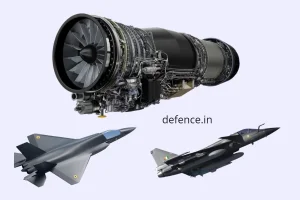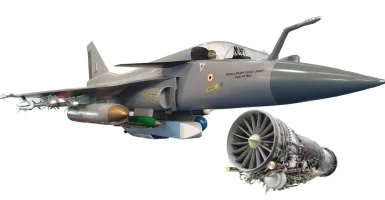- Views: 6K
- Replies: 50
A new conceptual design is sparking discussion about India's indigenous aerospace capabilities. Kuntal Biswas, a prominent Indian 3D military system and defence animation specialist, has unveiled a rendering of a twin-engine variant of the Tejas Mk2 fighter jet.
This visionary concept imagines the aircraft powered by two indigenous Kaveri engines, each potentially delivering 75kN of thrust, placing its projected performance in a similar category to established international fighters like the French Dassault Rafale.
Mr. Biswas's design envisions an evolution of the Tejas Mk2, originally planned as a single-engine medium aircraft, into a more powerful twin-engine multirole combat platform.
Key features in his concept include canard-delta wings for enhanced agility, an Indian-developed Active Electronically Scanned Array (AESA) radar, and a suite of homegrown weapons systems.
With an estimated Maximum Take-Off Weight (MTOW) around 24 tonnes, this proposed configuration aims for capabilities comparable to the Rafale, which operates with twin Snecma M-88 engines also rated at 75kN thrust each.
Central to this concept is the potential use of an advanced version of the Kaveri engine, a long-term project of the Defence Research and Development Organisation's (DRDO) Gas Turbine Research Establishment (GTRE).
While the Kaveri program has faced developmental hurdles, Mr. Biswas's design assumes a future iteration capable of consistently producing 75kN per engine. This would provide the conceptual Tejas Mk2 with a combined thrust of 150kN, theoretically equipping it with the power necessary for demanding modern air combat operations and multirole versatility, mirroring the Rafale's 24.5-tonne MTOW and proven performance.
Strategically, such an aircraft could address a specific need within the Indian Air Force (IAF). Currently, the IAF operates the lightweight single-engine Tejas Mk1A and is developing the fifth-generation Advanced Medium Combat Aircraft (AMCA).
A twin-engine, medium-weight fighter in the 20-25 tonne class, as depicted by Mr. Biswas, could fill the gap between these categories. It potentially offers an indigenous option for the capabilities sought under the IAF's Multi-Role Fighter Aircraft (MRFA) procurement plan, which is currently considering expensive foreign platforms.
The visual renderings produced by Mr. Biswas effectively translate technical possibilities into a compelling design, highlighting potential improvements in thrust-to-weight ratio and weapon payload capacity over the single-engine version.
Enthusiastic responses on social media platforms, including suggestions like "Super-Tejas," indicate public interest in seeing such indigenous concepts pursued by organisations like Hindustan Aeronautics Limited (HAL) and the IAF.
The comparison to the Rafale is relevant, as the French jet is known for its versatility across air-to-air, strike, and reconnaissance roles – capabilities that a twin-engine Tejas could aspire to replicate for India's specific defence requirements.
However, transforming this concept into a flying reality involves overcoming significant technical challenges. The Kaveri engine program requires further development to achieve the reliability, performance consistency, and potentially lower weight needed for serial production and operational deployment.
Integrating twin engines would also necessitate a major redesign of the existing Tejas airframe, impacting structures, air intakes, and internal systems – a complex engineering task. Continued investment, and possibly international collaboration on engine technology, would likely be essential.
Despite these hurdles, Mr. Biswas's conceptual work underscores the potential within India's defence and aerospace sector. It presents a vision for a powerful, homegrown fighter jet that aligns with the national goal of 'Aatmanirbhar Bharat' (self-reliant India) in defence.
If realised, a twin-engine Tejas Mk2 could significantly reduce India's dependence on foreign military imports for its medium fighter needs, providing a boost to the domestic industry while offering a capable platform tailored to the nation's strategic environment.


